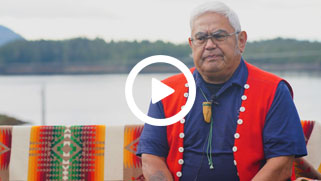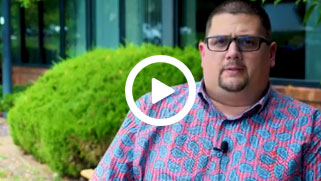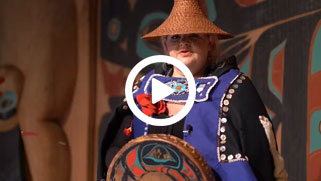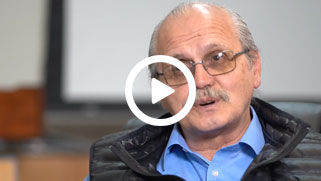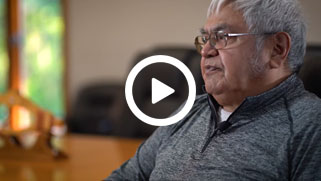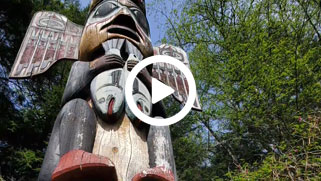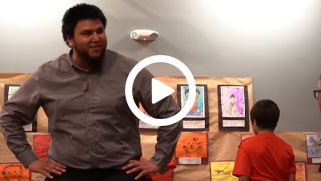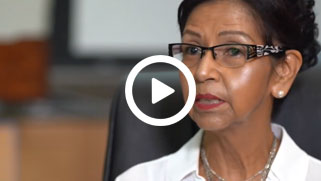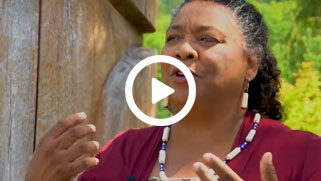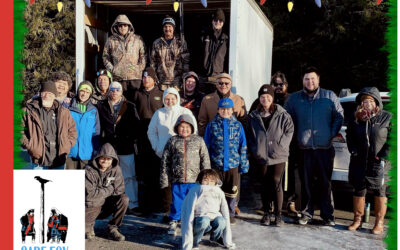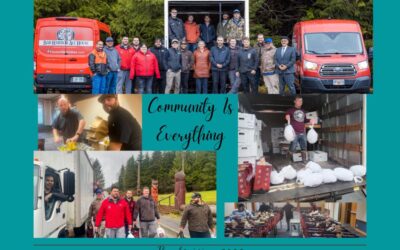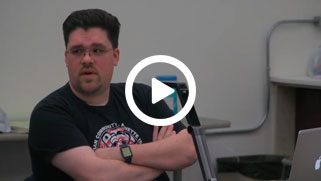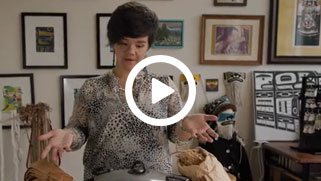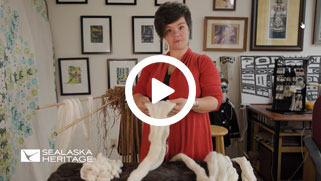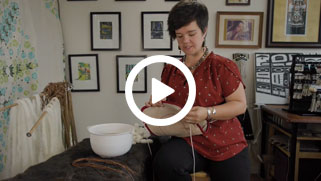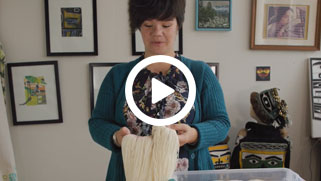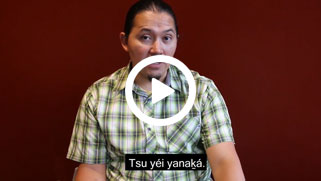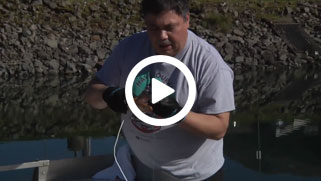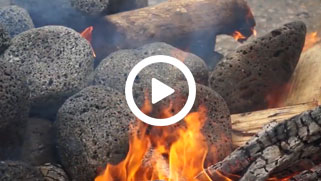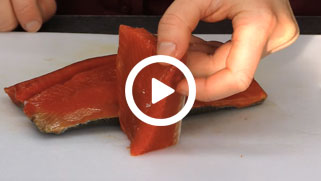People of the Southeast Wind
Culture Center
Gunalchéesh for visiting the Cape Fox Culture Center. We are proud of our Tlingit ancestry. If you are a Cape Fox shareholder or a shareholder descendent and would like to add your story to the site, please contact us.
Art Culture
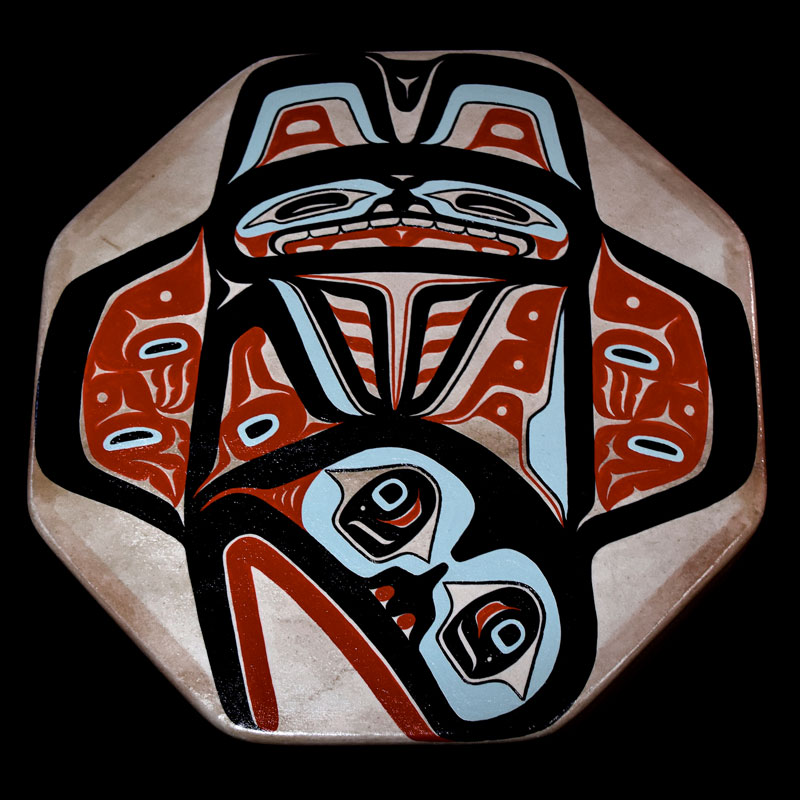
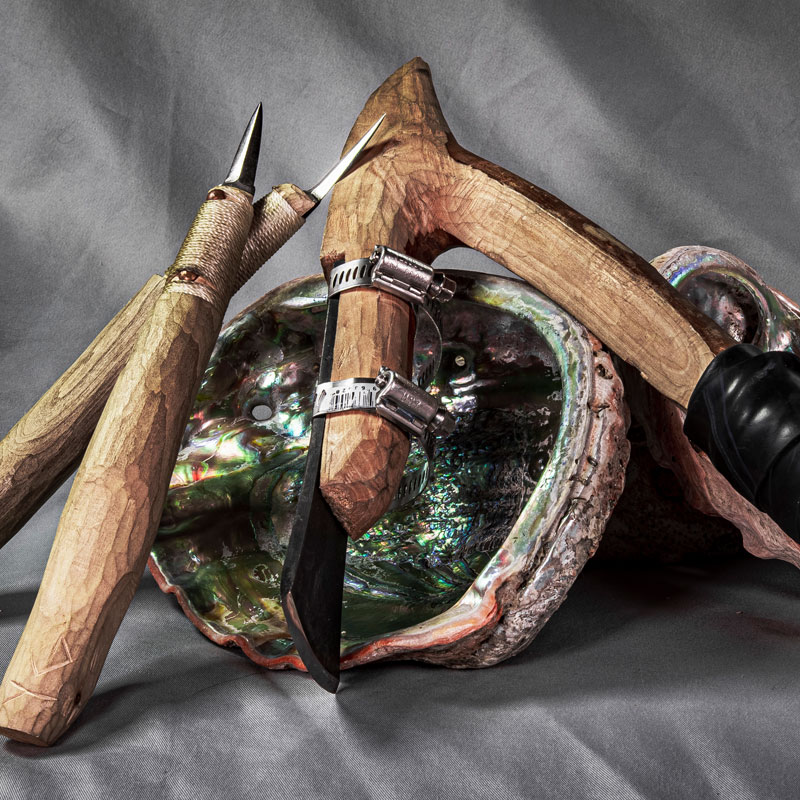
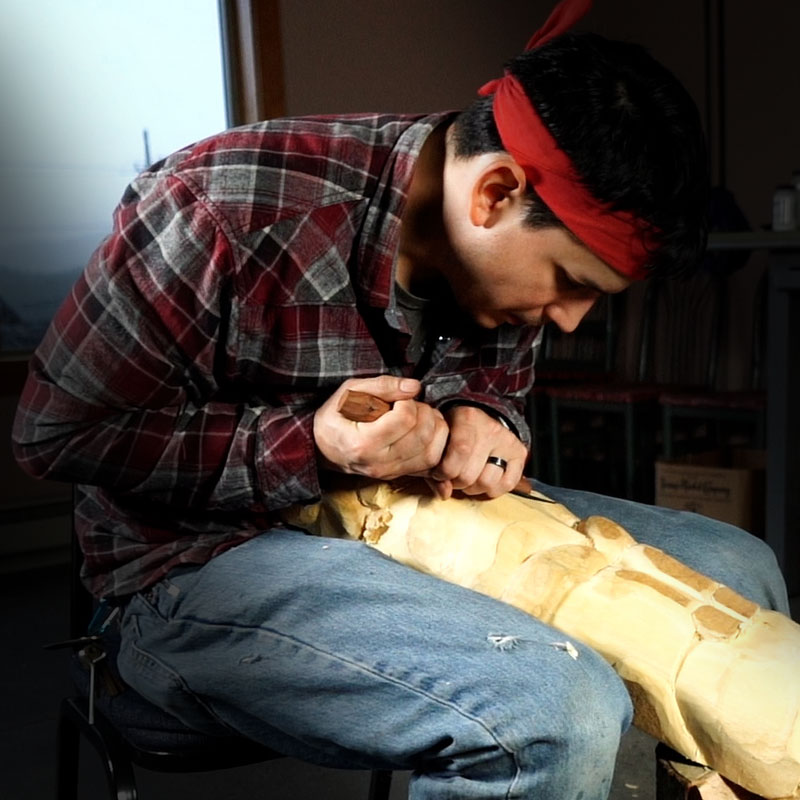
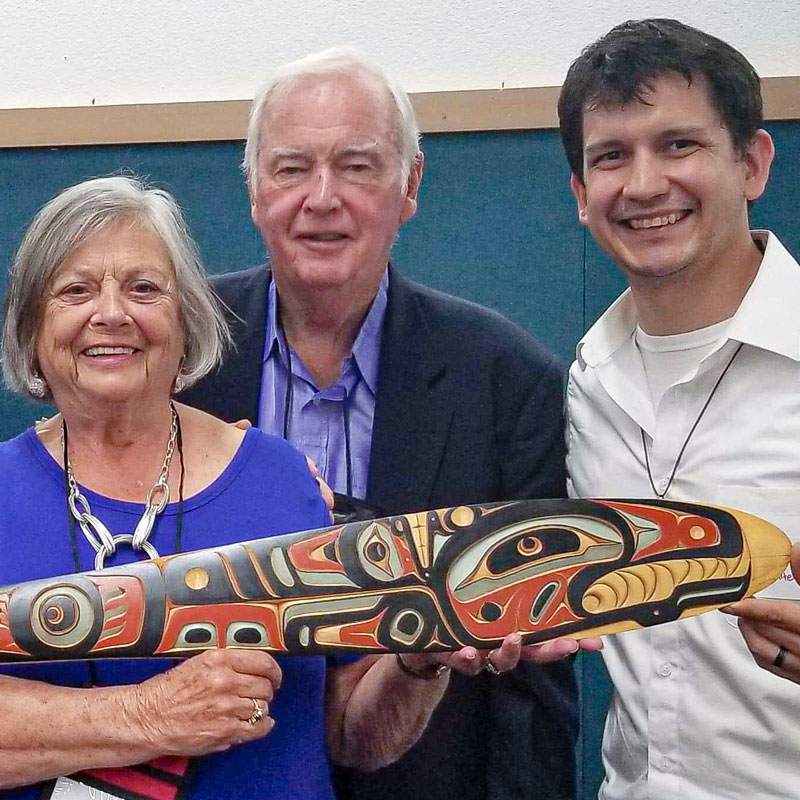
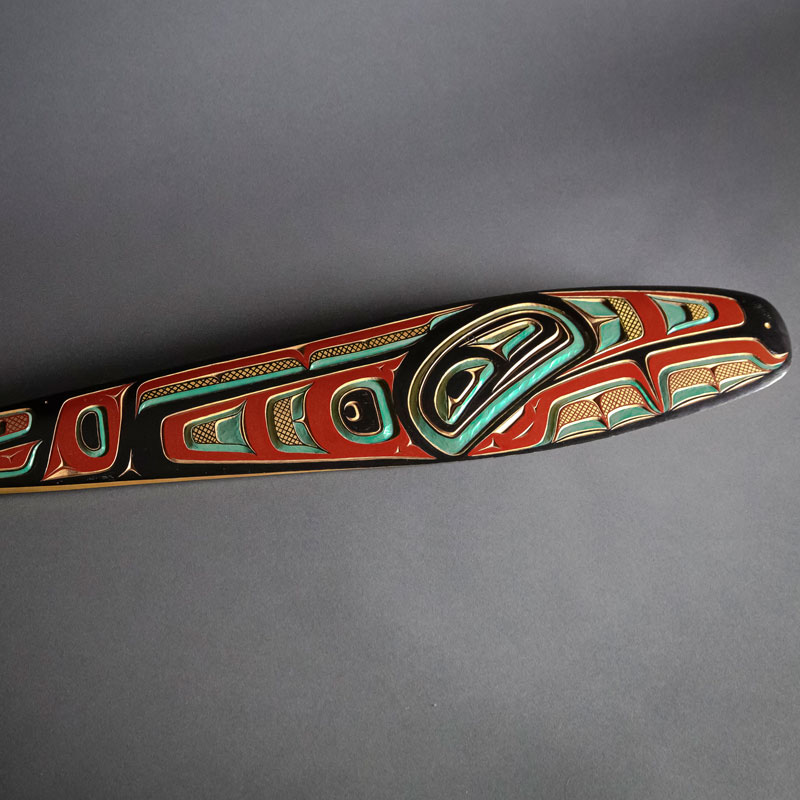
Cape Fox Corporation Artist-in-Residence
Featured here is the art of Kenneth “Kelly” White the CFC Artist-In-Residence. More about Kelly White >
Insights
Unique Experiences Grow Unique Insights
The Insights program looks at how Cape Fox leads, thinks, feels, and interacts. It is a preview into what drives our Cape Fox Team. Knowing the culture, history, and experiences of our elders, leaders, and shareholders is important. What are their unique Tlingit experiences? Why is keeping their culture alive important? What advice do they have to the Tlingit youth? Listen to their unique insights as an Alaska Native.
Trails of the Board
Walking in the footsteps of elders that came before us, our Board members have a need to continue the heritage, legacy, and traditions that were passed down from our ancestors. One of those is through leadership. Our Board is forging a path created by our elders and continued now for future generations to learn, grow, and lead the Corporation into the future for many years to come.
Community Highlights
Cape Fox Corporation Cares for the Community Through the Gift of Sharing
The holidays are a beautiful time of the year in Alaska, with snow falling out our windows, presents under the tree, and smiles on family and friends. Cape Fox Corporation (CFC) wanted to ensure the community felt the joy of the season with a holiday food drive for the third year in a row. On December 21st, CFC brought the spirit of caring to Saxman, Alaska, through its Cape Fox Cares Program. Volunteers from Cape Fox Lodge (CFL) and CFC gathered to provide the Saxman community with food this holiday season so everyone could enjoy a family meal.
Cape Fox Corporation Shows Gratitude to its Community
This year has been filled with blessings, achievements, and growth. The best way for Cape Fox Corporation (CFC) to celebrate our good fortunes is by giving back to others. For the fourth year in a row, CFC held its annual Thanksgiving Turkey Drive in Saxman, Alaska. During this time, when everyone is expressing and showing gratitude and thankfulness, we wanted to express our thanks to our community.
Cape Fox Cares Supports STEM Camp for Kids
Cape Fox Cares, the charitable program for Cape Fox Corporation (CFC), supports endeavors that focus on the well-being of communities through education and advancement. In June, Cape Fox Cares donated to the Smart Community STEM Camp (SCSC). As CFC looks to the future with our new CFC Innovation Hub, we are proud to support the educational possibilities for young children who excel and have an interest in technology and advancing communities with modern and emerging technologies.
Tlingit History
Tlingit Legacy Rich in Community, Family, and Strength
The legacy of the Tlingits include a rich history, a culture devoted to the strength of community and family, and proud, resilient people. Their history began 11,000 years ago when they migrated across the Bearing Strait to a new land finally settling along the shores of Southeast Alaska. The early Tlingits made their home at Cape Fox in the Alexander Archipelago – a small chain of wind stripped islands off the coast of the Alaska Panhandle – 53 miles southeast of Ketchikan, Alaska. At the turn of the 20th century, the Tlingits moved from the original Cape Fox village, settling in Saxman, Alaska. Today, Cape Fox Corporation (CFC) is devoted to educating the world about the Tlingit culture through our art and language while also providing for its Shareholders with a financial resource and preservation of our lands.
OUR NATIVE LEGACY: HISTORY & HERITAGE
Southeast Alaska is home to three distinct Native tribal groups: The Tlingit (pro: KLING kit), the Haida (pro: HIGH duh) and the Tsimshian (pro: SIM she ann). The Tlingit people have been here since time immemorial.
The Tlingit People
Mountainous and icy islands stretch 480 miles between Icy Bay, Alaska, and the small city of Ketchikan, Alaska.
30 FACTS ABOUT TLINGIT ART, CULTURE & THE HISTORY OF ALASKA’S NATIVE TRIBES
There are few places you can travel in the United States where the indigenous culture is quite so prevalent as it is in Southeast Alaska.
Tlingit Tribe
Summary and Definition: The Tlingit were a seafaring people, skilled fishers, traders and hunters-gatherers, who were located southern Alaska in the United States and British Columbia and the Yukon in Canada.
Art Education
Tlingit Art – Connecting Nature and Mythology
Most Tlingit art includes an element of spirituality. Tlingit art represents the nature around them, mythological stories passed down from generation to generation, complex, intricate designs, and still maintains some functionality. Tlingit artwork can include everyday objects such as utensils or storage boxes to their houses. Tlingit works of art are painted with colorful, traditional clan imagery. Tlingit art includes totems, boxes, canoes, masks, dishes, and utensils usually out of wood or abalone shells. Blankets are robes are created with a special style of Chilkat weaving which is a complex weaving technique that can take one to five years to create and feature horizontal and circular patterns of classic curvilinear and circular formlines within the weave to create highly stylized clan crests, animals, and other figures from the tribe’s oral history.
Tlingit Carving
Local Mastercarver Jim Heaton instructs students during the 2005 restoration of the Haines High School Friendship Pole. This huge pole is a much larger reproduction of a pole presented…
American Museum of Natural History
“There are rules in our art, and you have to know them so well that you can make them your own. Within these rules we have to create everything, and that’s the hardest part.”
—Dempsey Bob, Tlingit artist
Sealaska Heritage Institute: Formline Class with David Boxley
Visit – Sealaska Heritage Institute YouTube for more Formline Instruction
Sealaska Heritage Institute: Preparing for Chilkat Weaving with Lily Hope
Visit – Sealaska Heritage Institute YouTube for more Chilkat Weaving
Language Education
Language is one of the most important parts of any culture. It is the way by which people communicate with one another, build relationships, and create a sense of community. The Tlingit language was not written until missionaries began developing a written-version of the language. Prior to that, the Tlingit culture was an oral tradition passed down from generation to generation through stories and myths. Today, we are working hard to preserve the Tlingit language with elders mentoring youth courses in speaking the language to keep it alive. Tlingit youth of today are greatly interested in preserving this part of their culture, the language.
Tlingit Conversation
A weekly radio celebration of Alaska Native languages, especially the endangered Tlingit, Haida, and Ts’msyen. Hear conversations, songs, stories, and much more. Broadcasted by K’yuuhlgáansii (Place of One’s Own, Haida) from Lingit Aani (Tlingit Land) in Sitka, Alaska. “Gunalchéesh” (“goonuthsh–CHEESH”) means “Thank You” in Tlingit.
Comprehensive List of Tlingit Names for All the Present-Day Communities in Lingít Aaní
For untold thousands of years, the coastline and islands of northwestern North America have been filled with small communities ranging in size from a few dozen to a few hundred people. In Lingít Aaní—the land of the Tlingit people—the same is largely true today: While millions of people now live around the Salish Sea in the Seattle-Vancouver megalopolis, the northern portion…
Art of Storytelling: Gene Tagaban (Tlingit)
Native American storytellers use the oral tradition to teach life lessons, tribal histories, and the nuance of languages. Such stories are an essential tool in passing knowledge from one generation to the next.
10 Tlingit Words We Should All Be Using in Southeast Alaska
Anywhere you go in the world, you’ll find concepts that don’t quite translate into English. German, famously, has many useful words that we can’t seem to express succinctly in English, like Weltschmerz and Schadenfreude.
Tlingit Dictionary
Adobe Acrobat PDF
Dictionary of Tlingit
Adobe Acrobat PDF
Sealaska Heritage Institute: Preserving Tlingit Culture Through Language Education
Visit – Sealaska Heritage Institute for more Language Videos & Information
Subsistence & Food Preparation
Have you ever eaten smoked salmon, cod, halibut, or herring? If you have, you have had a taste of traditional Tlingit food. Tlingits living near the water relied heavily on the sea for their subsistence. Many Tlingit dishes include seaweed, clams, crab, and of course fish. Salmon is a favorite though and it was usually smoked and dried, to preserve it. Tlingit people traditionally use the entire fish. If fish are filleted, backbones are usually smoked or boiled in soup. Heads are baked or boiled in soup, but they may also be fermented.
While fish was a staple to their diet, they often supplement with wapato (Indian Potato), greens, seeds, berries, and venison, and even the occasional seal. Women also pressed the rich oil from the eulachon (candlefish) and used large amounts of this oil as a dip for their food.
Alaska Natives Recipes
Alaska’s indigenous people are divided into eleven distinct cultures with 20 different languages. They include: Aleut, Inuit, Tlingit, Haida, Tsimshian, Eyak, and a number of Northern Athabaskan cultures. Depending on where they lived and the season of the year determined the diet available to them. The hunter/gatherer societies were based largely on an active subsistence hunting and traditional use of foods such as…
Jane's Tlingit Tribe - Alaska Natives Recipes
- Indian Fry Bread
- Alaska Sockeye Salmon
- Salman Cakes
- Seminole Roast Rabbit
- Bear Chops
- Bannock
Our Food Is Our Tlingit Way of Life
Excerpts From Oral Interviews
Richard G. Newton and Madonna L. Moss
Sealaska Heritage Institute
Visit – Sealaska Heritage Institute YouTube for more Subsistence Videos
Alaska Department of Fishing and Game Channel
Visit – Alaska Department of Fishing and Game Channel YouTube for more Subsistence and Food Preparation Videos
“
We live our culture each and every day, our subsistence, our language, our culture, and our elders. Without our elders, we wouldn’t be here. I want it to be perpetuated for several generations…don’t be afraid to step in and help, don’t be afraid to get involved.
“
Candace Williams, Cape Fox Board Member
UNIQUE OPPORTUNITY
BECOME A CAPE FOX HERITAGE GUIDE
Our legacy from the past and our cultural heritage are irreplaceable. They are sources of vitality and inspiration and represent our Tlingit values. The protection of our Tlingit culture is of paramount importance. To that end, we are actively seeking out Cape Fox Heritage Guides. Heritage Guides are mentors, leaders, and Elders who can help guide our Cape Fox youth into the future while grounding them in rich Tlingit culture, values, and traditions. If you have the skills and knowledge passed down from our ancestors, you could be a valuable resource by sharing your wisdom with the next generation. Be a part of preserving our language and heritage. We are in need of your personal abilities if you can:
- Hunt, Clean, and Skin Seal or Deer
- Catch and Filet Fish
- Stretch and Tan a Hide
- Build a Cabin
- Identify Forest Plants
- Speak Tlingit Language
- Tlingit Storytelling
- Cultural Heritage
For further information about how you can help preserve our Tlingit heritage for generations to come, contact Shareholder Services at 907.225.5163 or
